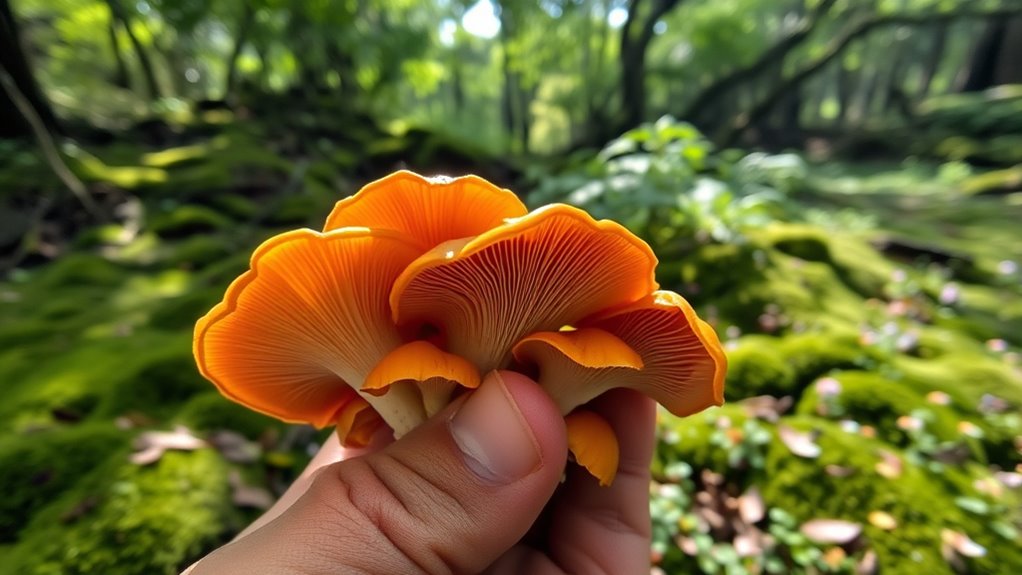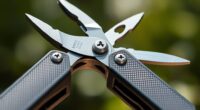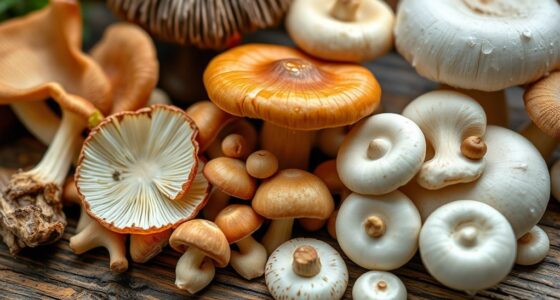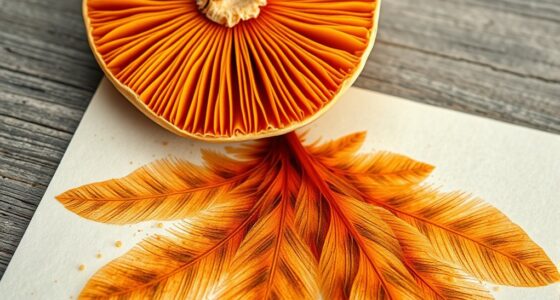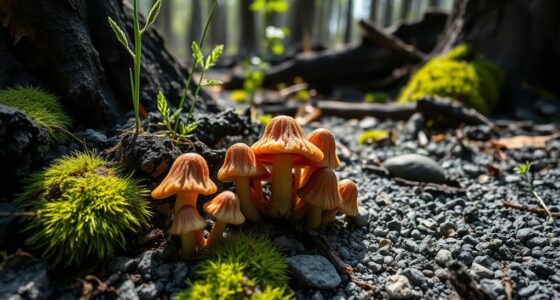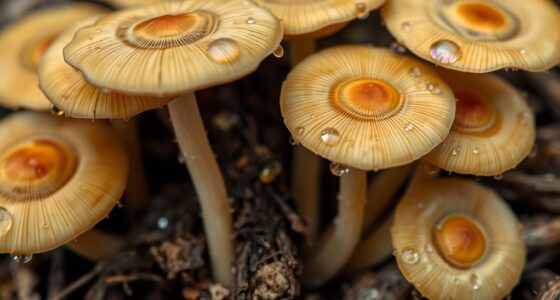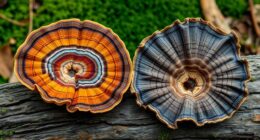As a citizen scientist, documenting your mushroom finds helps understand their distribution, ecological roles, and how they’re impacted by environmental changes. By accurately identifying, photographing, and recording details about each mushroom, you contribute valuable data for conservation efforts. Your efforts can reveal patterns in fungal diversity and highlight habitats in need of protection. If you keep exploring, you’ll discover more tips and techniques to make your fungal monitoring even more effective.
Key Takeaways
- Record detailed observations, including location, habitat, and mushroom features, to contribute valuable data for conservation efforts.
- Capture high-quality photographs from multiple angles to aid accurate identification and documentation.
- Submit data through established platforms, ensuring accuracy, completeness, and proper use of mycology terminology.
- Use collected data to map fungal distributions, identify critical habitats, and monitor environmental changes over time.
- Support conservation initiatives by sharing findings that reveal fungal diversity, adaptation patterns, and underground networks.
The Role of Citizen Scientists in Mushroom Monitoring

Citizen scientists play a crucial role in mushroom monitoring by providing valuable data that would be difficult for researchers to collect alone. Your observations help track spore dispersal patterns, revealing how fungi spread and thrive across different environments. By documenting mushroom occurrences, you contribute to understanding mycorrhizal relationships—symbiotic connections between fungi and plant roots—that are essential for ecosystem health. Your efforts can identify shifts in fungal populations caused by climate change or habitat loss. When you record details like location, habitat, and mushroom type, you help build an extensive picture of fungal distribution. This data not only aids conservation but also enhances scientific knowledge of how fungi interact with their surroundings, making your contribution indispensable to preserving these essential organisms. Incorporating vertical storage solutions and other organizational strategies can also help maintain the equipment or samples you collect, ensuring their integrity for scientific analysis.
Tools and Techniques for Accurate Mushroom Identification
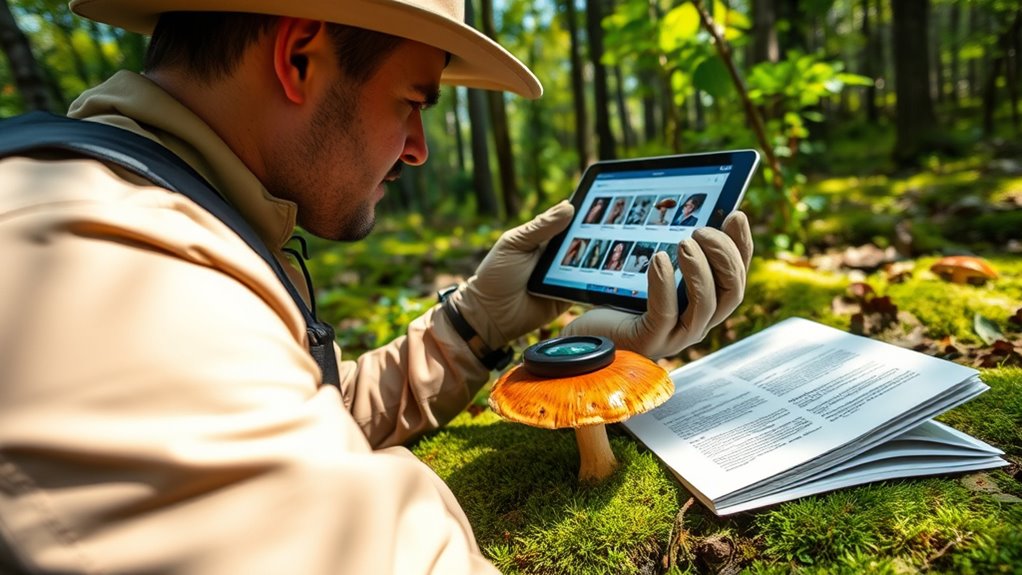
Accurate mushroom identification relies on a combination of reliable tools and careful techniques. First, study mushroom morphology—pay attention to features like cap shape, gills, stem, and spore color. Using a good identification guide helps you compare these features with established descriptions. Take detailed photographs from multiple angles to document key characteristics. Always note the habitat and surrounding environment, as these details can aid identification. Some tools, like a hand lens or field knife, can help you examine features closely. Remember, mushroom identification can be tricky, so cross-reference findings with multiple guides. Additionally, understanding the role of environmental factors can help you distinguish between similar species. Avoid rushing; take your time to observe every detail carefully. By combining these tools and techniques, you improve your accuracy and contribute valuable data to citizen science efforts.
How to Record and Submit Your Finds Effectively
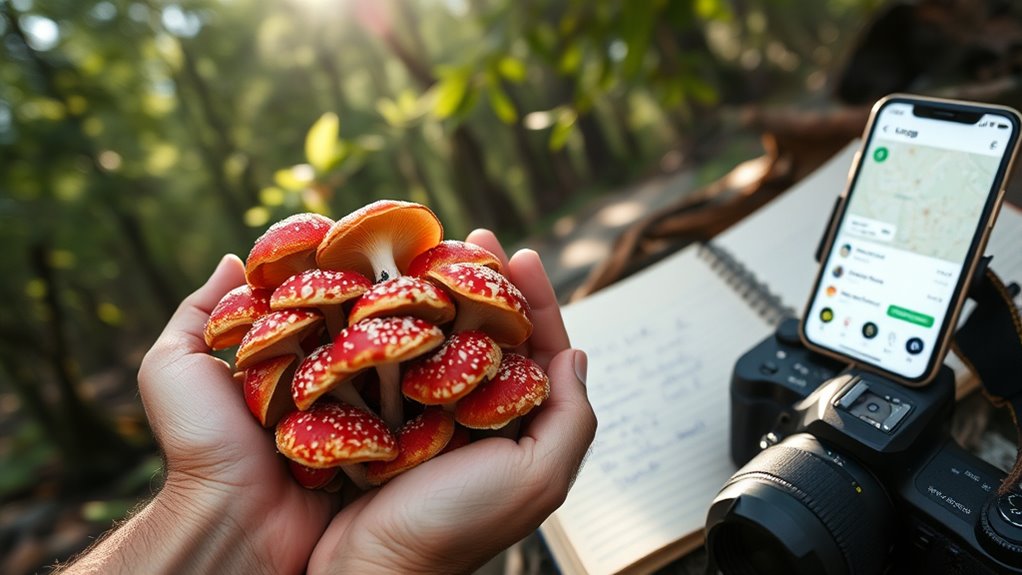
To guarantee your mushroom finds contribute meaningfully to conservation efforts, it’s essential to record and submit your observations clearly and accurately. Use precise mycology terminology when describing features like cap shape, gill attachment, and spore color. Take high-quality specimen photography from multiple angles, ensuring good lighting and focus to capture key details. Include details such as habitat, substrate, and date of collection, which are crucial for correct identification. Before submitting, double-check your data for accuracy and completeness. Many citizen science platforms have specific forms; follow their instructions carefully. Clear images and accurate descriptions help mycologists verify your findings quickly. By being meticulous and precise, you increase the value of your contribution, supporting better understanding and conservation of fungal diversity. Engaging with accurate information about mushroom identification enhances the reliability of your submissions and benefits conservation efforts.
The Impact of Collective Data on Fungal Conservation
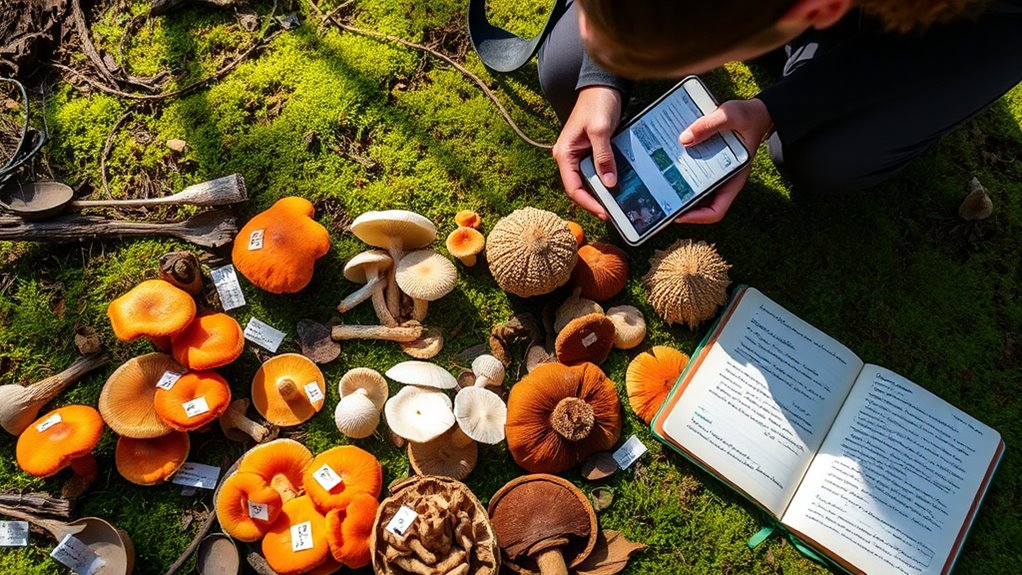
When enthusiasts collectively share their mushroom observations, they create a powerful dataset that can drive meaningful conservation efforts. This aggregated data enhances our understanding of fungal genetics, revealing patterns of diversity and adaptation. It also sheds light on Mycorrhizal networks, the underground connections that fungi form with plant roots, which are crucial for ecosystem health. By mapping these networks, citizen scientists help identify critical habitats and monitor changes over time. This collective effort informs conservation strategies, highlighting areas needing protection or restoration. The more data you contribute, the clearer the picture becomes of how fungi support broader ecological systems. Additionally, leveraging AI technologies can help analyze large datasets more efficiently, uncovering insights that might otherwise go unnoticed. Ultimately, your participation helps ensure that fungal populations and their essential functions are preserved for future generations.
Getting Involved: Tips for Aspiring Mushroom Loggers
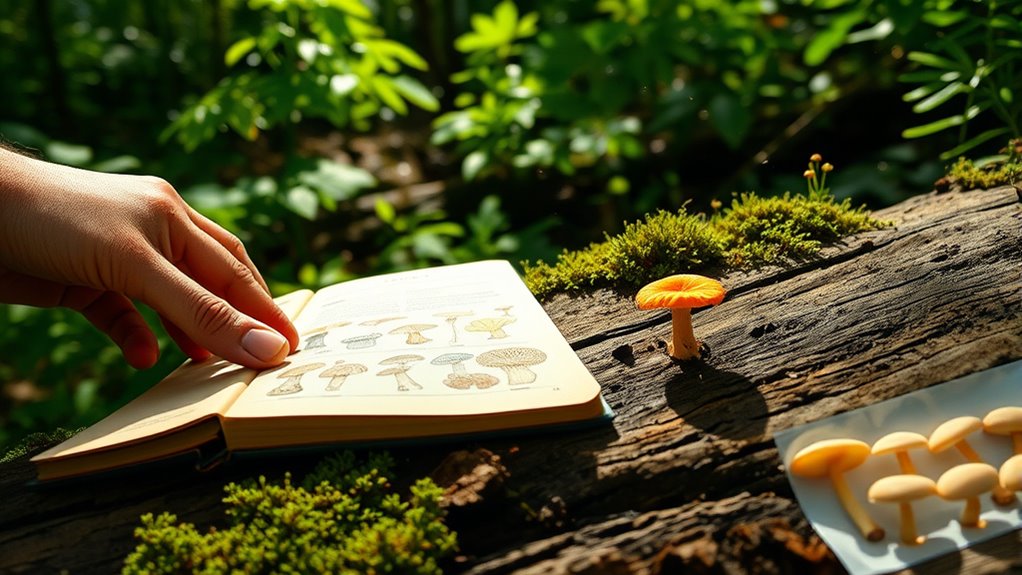
Getting started as a mushroom logger is simpler than you might think. First, learn foraging ethics—always respect local regulations and avoid overharvesting to protect mushroom populations. When collecting, only take what you need and be mindful of the environment. To log mushrooms effectively, choose a sturdy, well-maintained log, ideally hardwood, that has been placed in a suitable shady spot. Regular log maintenance is key: keep the log free of debris, monitor for pests, and ensure it remains moist but not waterlogged. Document your findings carefully, noting species, location, and conditions. Proper soil health is essential for supporting the growth of fungi and other organisms in your logging site. This not only supports conservation efforts but also improves your identification skills. With patience and attention to foraging ethics and log maintenance, you can contribute meaningfully to citizen science projects.
Frequently Asked Questions
How Can I Ensure My Mushroom Identifications Are Legally Compliant?
To guarantee your mushroom identifications are legally compliant, you should understand relevant legal considerations in your area, such as collecting permits or restrictions. Always prioritize data accuracy by cross-referencing with trusted field guides and expert sources. Document your findings thoroughly, including photos and location details, to support your identifications. By staying informed about regulations and maintaining precise data, you help protect both yourself and the environment while contributing valuable citizen science data.
What Are Common Mistakes to Avoid When Logging Mushroom Data?
When logging mushroom data, avoid common mistakes like species misidentification, which can lead to unreliable data. Always double-check your identifications using multiple sources or expert advice. Don’t rush the process, as haste increases errors. Keep detailed notes on location and habitat, and verify your records are clear and accurate. By being thorough, you help maintain reliable data that benefits conservation efforts and future research.
Are There Any Risks Involved in Mushroom Foraging for Citizen Scientists?
When foraging mushrooms, you should be aware of potential risks involved in mushroom poisoning if you mistake toxic varieties for edible ones. Always prioritize foraging safety by properly identifying mushrooms and avoiding unfamiliar species. Even experienced foragers can sometimes make mistakes, so it’s vital to educate yourself and consult expert guides. Being cautious helps prevent health issues and makes your mushroom-hunting experience safer and more enjoyable.
How Can Data From Citizen Scientists Influence Policy Changes?
You can influence policy changes by sharing your mushroom data through citizen science platforms. Your contributions support policy advocacy by providing real-world information that highlights conservation needs. Scientific collaboration between citizen scientists and professionals ensures data accuracy and credibility. This combined effort can lead to informed decisions, better resource management, and stronger protection policies, making your participation essential in shaping effective environmental policies.
What Are the Best Ways to Engage Local Communities in Mushroom Conservation?
To engage your local community in mushroom conservation, start with community outreach programs that highlight the importance of fungi. Organize educational workshops to teach about mushroom identification and ecological roles, making it interactive and fun. Use social media and local events to raise awareness and encourage participation. When people feel connected and informed, they’re more likely to get involved and help protect mushroom habitats effectively.
Conclusion
By joining the world of citizen science, you become a essential thread in the vibrant tapestry of mushroom conservation. Your logs help paint a clearer picture of fungal diversity and health, guiding efforts to protect these hidden gems. Think of yourself as a mushroom detective, gathering clues that lead to a healthier ecosystem. So get out there, log your finds, and be part of this exciting journey to safeguard fungi for generations to come.

